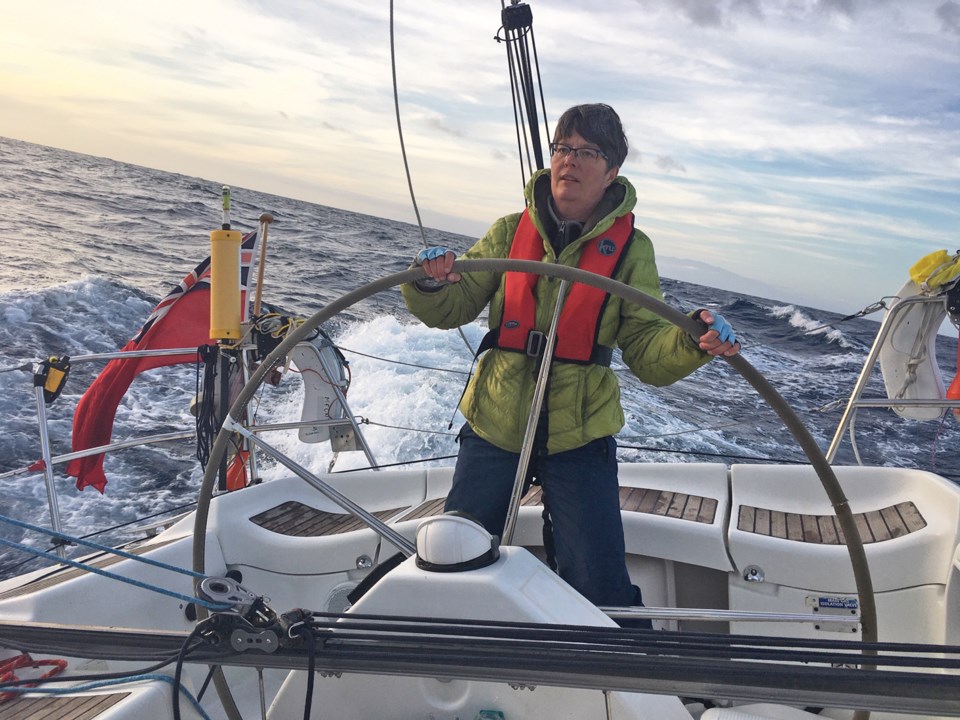Hopkins Landing resident Anna Richley has returned after placing 11th in a trans-Atlantic sailboat race.
Beginning in Gran Canaria, a tiny Spanish island off the coast of Morocco, and ending in Saint Lucia in the Caribbean Sea, the Atlantic Rally for Cruisers is the world’s largest trans-ocean sailing event – a 2,900 nautical mile crossing of approximately 200 vessels, 25 of which are in the racing division. Richley raced in the B Class.
It took Richley just over 19 days to sail with her five-person crew on a 40.7-foot Beneteau First racer cruiser, Playing Around, which was among the smallest boats in the fleet.
Seasickness, punishing gales and adjusting to team dynamics and sleep deprivation posed a few challenges for the crew, which met for the first time days before launching.
“Sailing across the Atlantic in the trade winds is one of the biggest feats and adventures in sailing,” said Richley on her blog that documented the event. The crossing isn’t as technically demanding, but it is a stormy one. “The navigation instruction includes ‘sail south until your butter melts then head west.’”
The squalls began shortly after the Nov. 24 start. By nightfall, winds reached almost 30 knots, bringing with them six-metre waves. “The wind is howling and we can barely hear each other talking, it is pitch black and we are being tossed around in the sea like we are a small cork,” said Richley of the experience.
She spent that first night trading helming duties with the captain, while in the cabin below the force of the squall caused chaos. “Things that were not properly stowed and hatches not completely closed get blown open,” wrote Richley. “The toilet door and a bunk door break off their hinges and fly across the cabin along with everything else that has broken loose.” Richley described that first evening as “frightening.”
Other boats were forced to turn off at Cape Verde for repairs or to change crew. Some ended their journey there.
That first night was followed by a 36-hour bout of seasickness, but after acquiring her sea legs, Richley said sailing through the relentless squalls, especially helming them, became a source of exhilaration, and ultimately a highlight of the trip.
The crew fell into a rhythm over the next three weeks, taking turns with helming, cleaning and inspections, communications, navigation and sleeping, among other tasks. While some were more experienced than others, they managed the journey well enough to achieve a competitive placing – and managed to jerry-rig a sail bag to cover the doorless bathroom.
Despite travelling with 189 other yachts, on the second day they lost sight of the other participants until three hours before their approach at Rodney Bay, where a welcome party had rum punches at the ready.
Richley returned to the sport less than three years ago following a 12-year hiatus. Involvement with the Gibsons Yacht Club and Gibsons’ Royal Canadian Marine Search and Rescue gave her a training boost, as she prepared for the adventure.
“My experience is that you have to take a step down the path you want to go on, and often other doors start to open,” said Richley of the experience.
And opening doors often lead to new goals. For Richley, the Pacific Ocean is calling.



